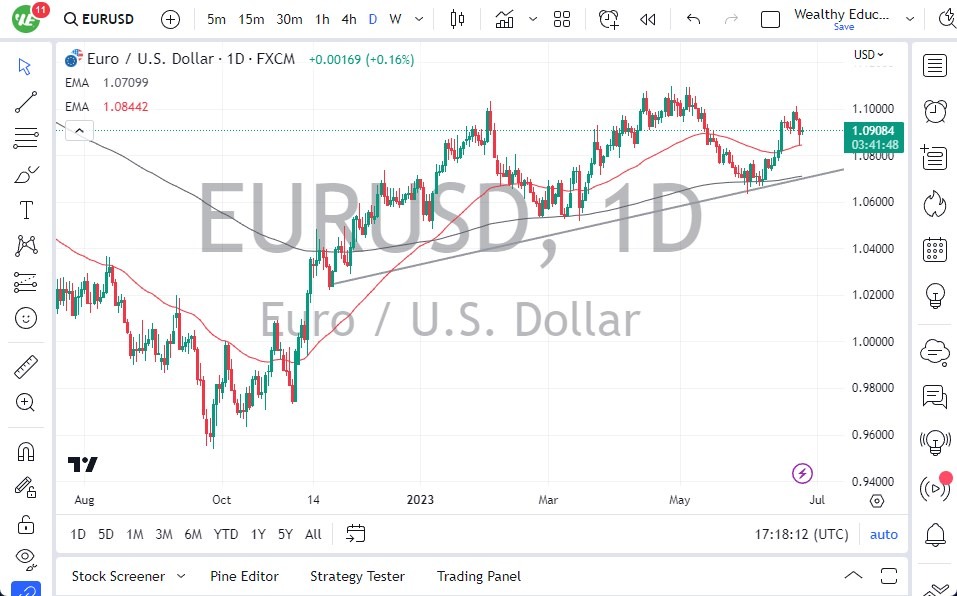- The EUR/USD rallied slightly in Monday's trading session as upward pressure remains a prominent theme. Market participants anticipate a potential return to 1.10 or even the 1.11 level. It is worth noting that the 50-Day EMA (Exponential Moving Average), a widely observed technical indicator, has played a significant role in the market's recent bounce.
- Despite acknowledging the tight monetary policies of both central banks, traders speculate that the Federal Reserve's rate hiking cycle may be nearing its conclusion.
- At the same time, the European Central Bank could have more room to maneuver.
Top Forex Brokers
However, the European Union faces various concerns, notably with Germany experiencing a technical recession. This development raises the possibility of the Europeans needing to adopt looser monetary policies to mitigate challenges within the EU's economic powerhouse. These concerns are likely to influence the market sentiment towards the euro. Additionally, global negativity and the potential for a worldwide economic slowdown may result in capital flowing back toward the US dollar.
Traders Should Remain Vigilant
The market appears to be in a consolidation phase, albeit with a slight upward inclination. The crucial 50-Day EMA is a key indicator, while the 200-Day EMA also holds significance. The market is anticipated to remain between the 200-Day EMA and the 1.11 level in the coming months. Nevertheless, given the prevalent choppy nature of the market, it is advisable to exercise caution and avoid becoming overly attached to a particular trade. Additionally, considering the confused state of the market, trading from short-term charts may be more appropriate, necessitating nimble decision-making.
At the end of the day, the euro exhibited a modest rally in recent trading, with expectations of potential upward movement toward the 1.10 or 1.11 levels. While the US Federal Reserve and the European Central Bank maintain tight monetary policies, market sentiment suggests that the Fed's rate hiking cycle might conclude soon. At the same time, the ECB may have more adjustments ahead. However, concerns within the European Union, such as Germany's technical recession, could prompt the need for looser monetary policies, impacting the euro's performance. Furthermore, global economic uncertainties and the possibility of a global slowdown may result in capital gravitating towards the US dollar. Amidst this backdrop, the market appears to be in a consolidation phase, albeit with an upward bias, necessitating cautious trading and focusing on short-term charts. Traders should remain vigilant, as various economic factors and market sentiment influence the euro's trajectory in the coming months.
 Ready to trade our Forex daily forecast? We’ve shortlisted the best FX trading platform in the industry for you.
Ready to trade our Forex daily forecast? We’ve shortlisted the best FX trading platform in the industry for you.

